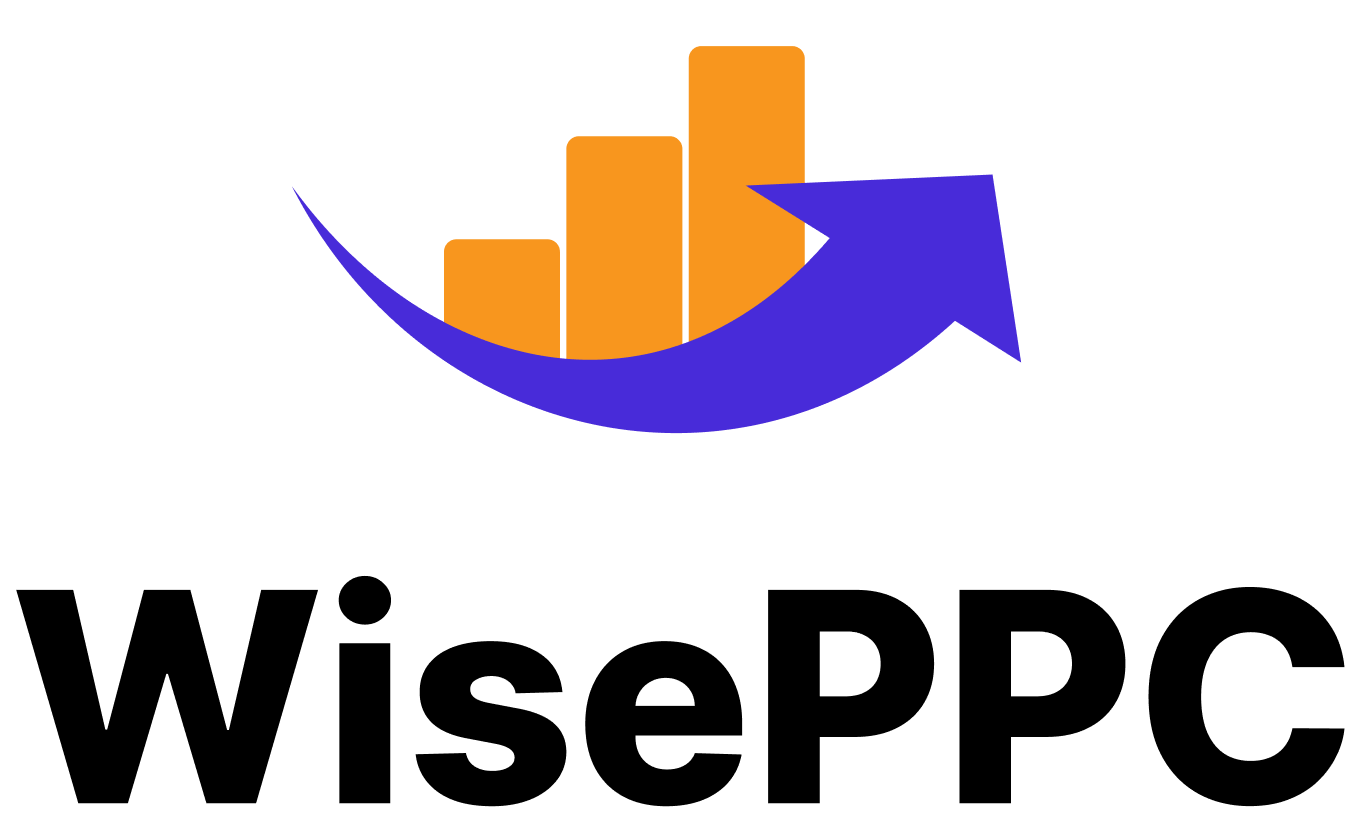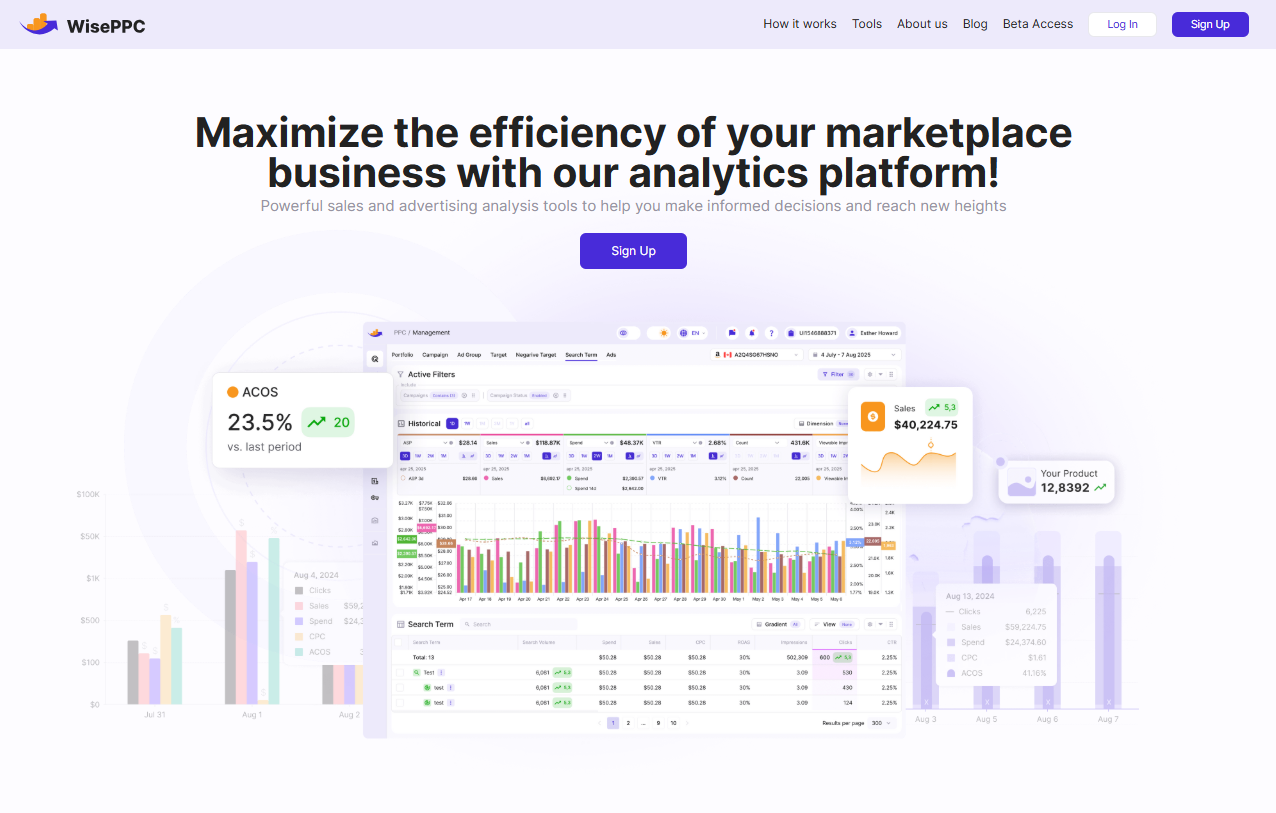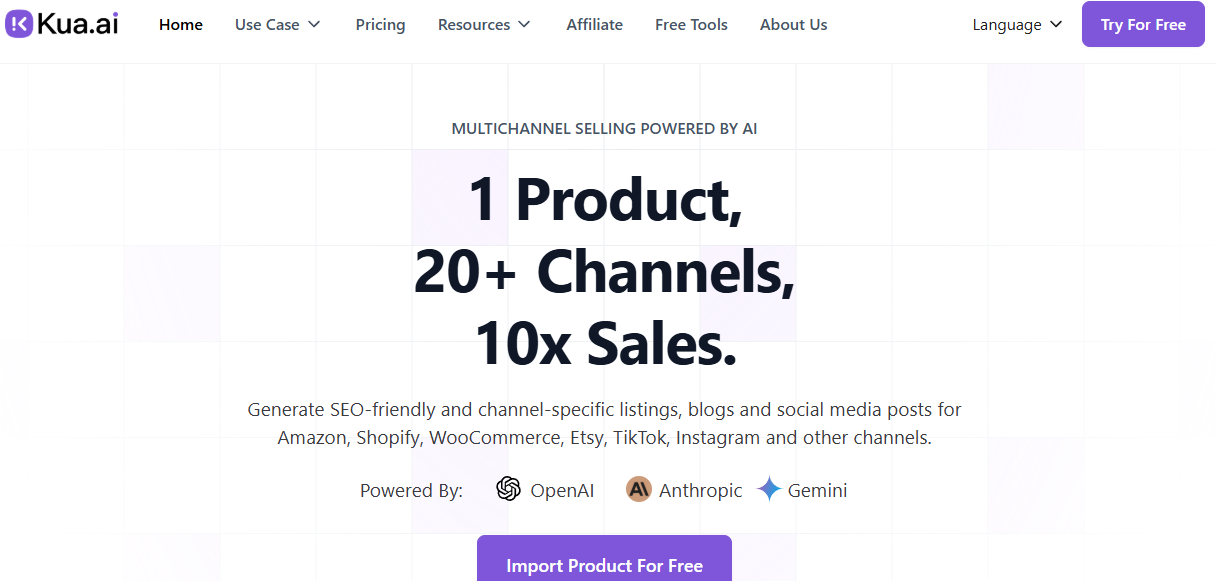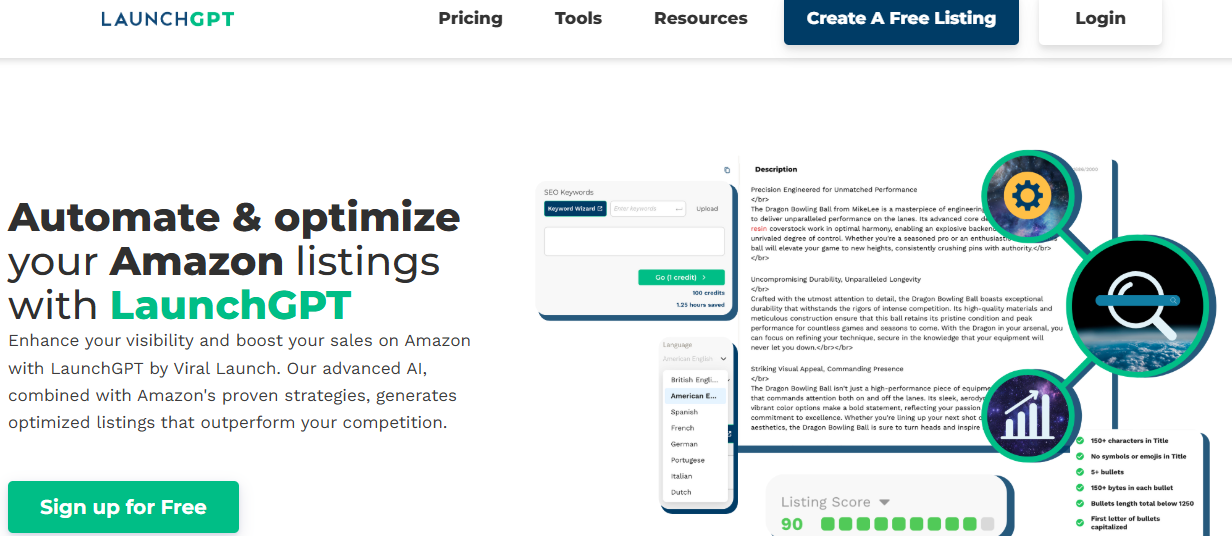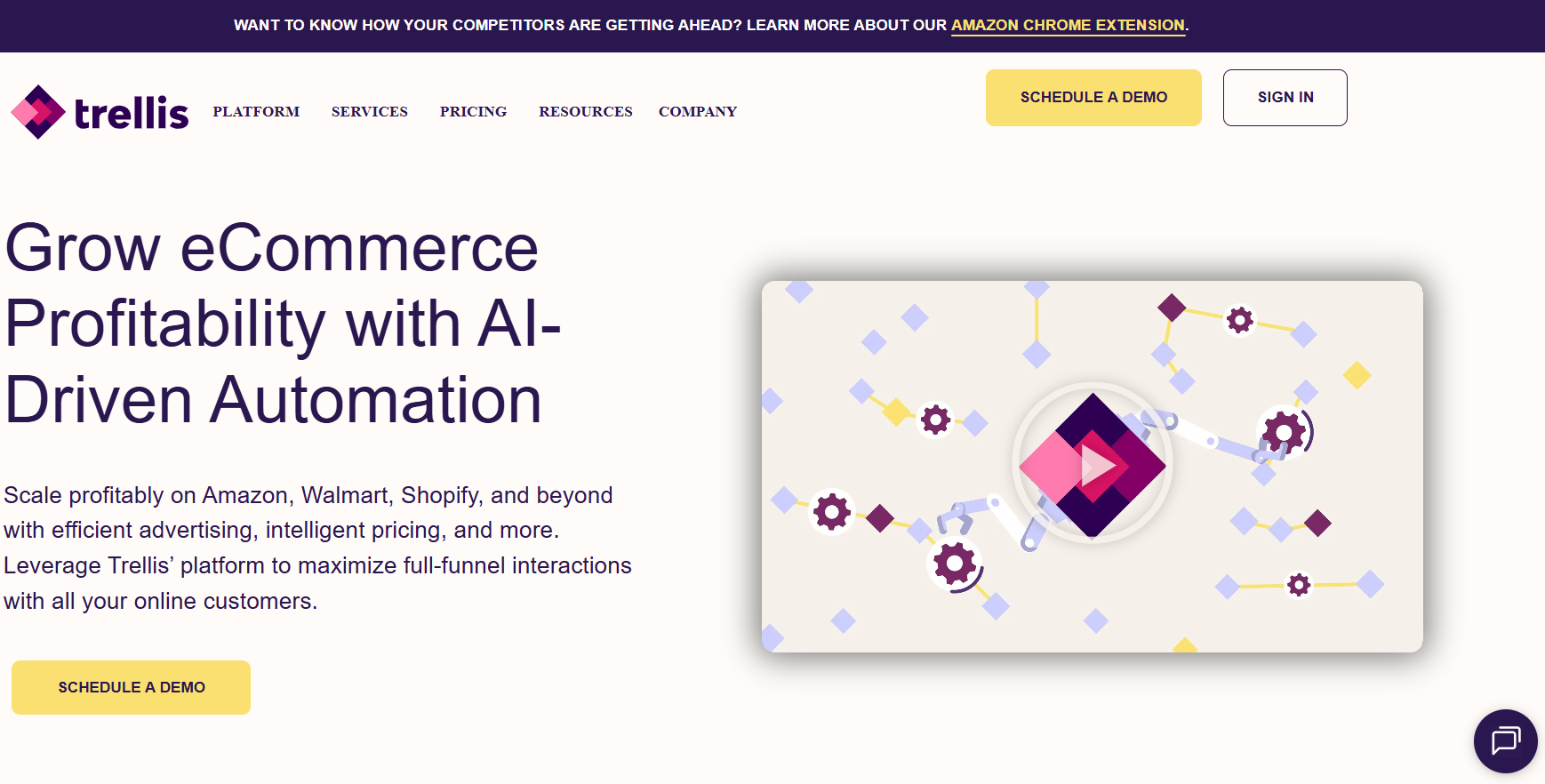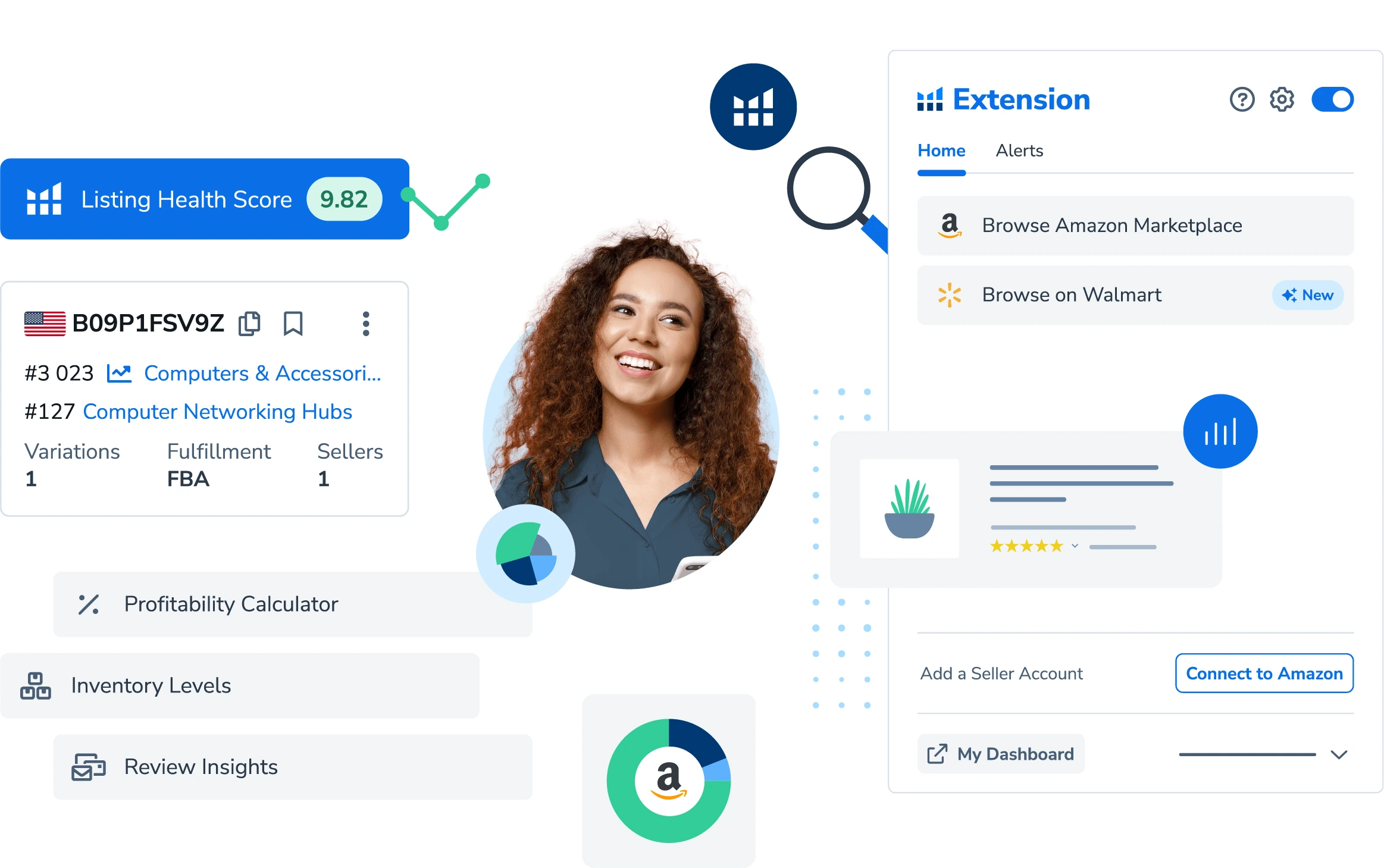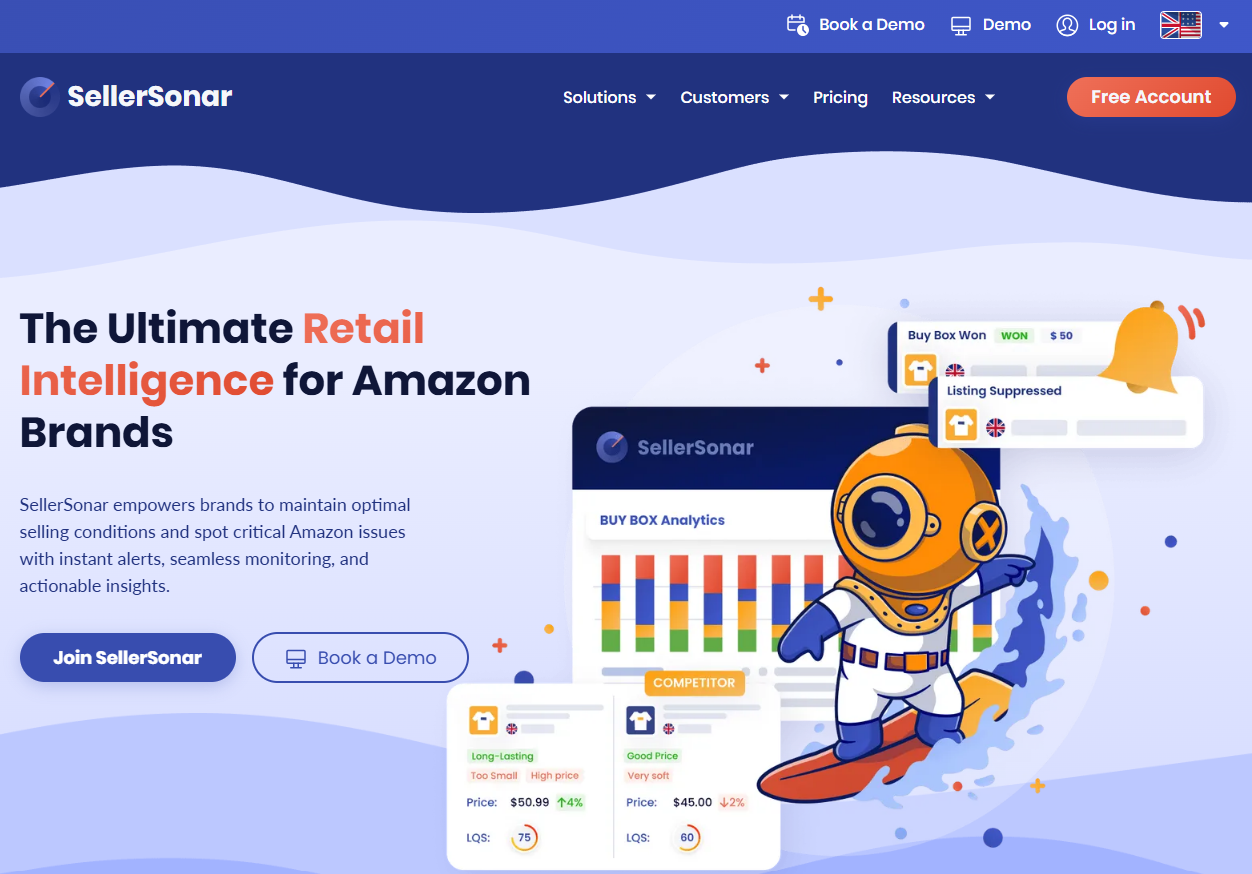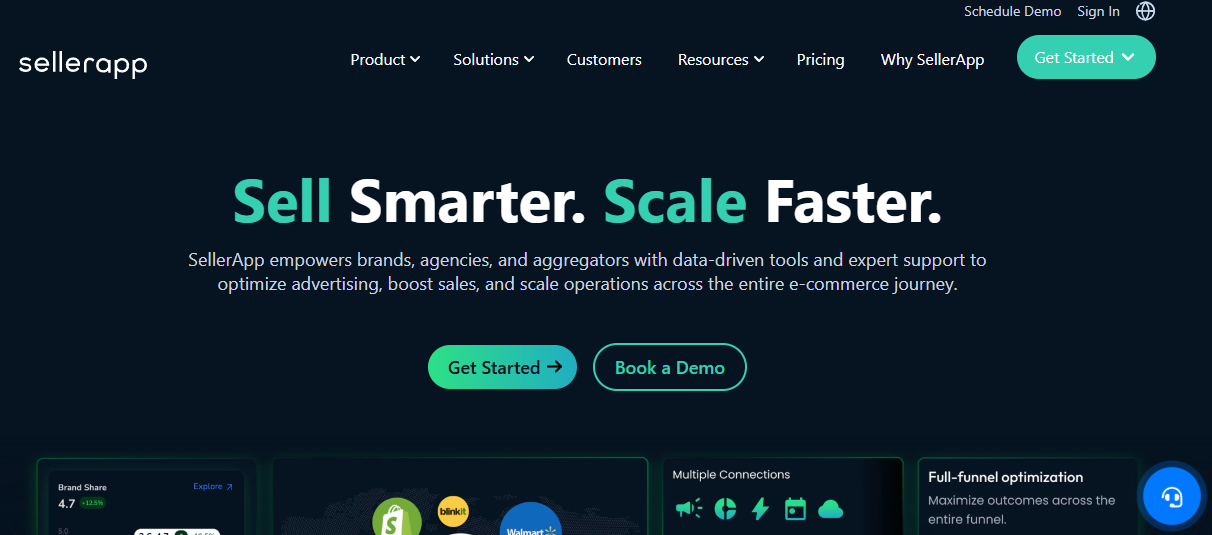Best Free Amazon Listing Optimization Tools
Selling on Amazon is tough enough without having to guess what’s wrong with your product pages. The good news is there are a bunch of free tools out there that can help polish your listings, spot weak spots, and even give you quick SEO checks without spending a dime. These tools aren’t magic, but they can help you figure out where to tweak your titles, bullet points, and keywords so your products actually show up when people search.
1. Wiseppc
We’re Wiseppc, and when it comes to free Amazon listing optimization tools, we’re one of the platforms we actually rely on to keep things more manageable. Instead of juggling spreadsheets or guessing what’s slowing sales down, our tool gives a clear picture of how ads and listings are performing. It’s not just about seeing numbers on a dashboard-we let you filter campaigns, tweak budgets instantly, and check which placements are delivering results without switching between screens. We also offer long-term data storage, which is especially useful since Amazon doesn’t retain records that far back.
We’ve built WisePPC to help you dive deep without drowning in data. You can analyze metrics like click-through rate, cost per click, and average selling price in a way that’s intuitive and actionable. Our gradient highlighting makes it easy to spot performance issues at a glance, instead of scanning endless rows of numbers. For a free tool, we turn daily optimization into a smart habit -not a tedious task.
Key Highlights:
- Bulk editing for campaigns, ad groups, and keywords
- Advanced filters to narrow down performance data
- Historical charts with flexible timeframes
- Inline editing for bids and budgets
- Placement performance analysis at multiple levels
- Long-term storage of historical sales and ad data
Who it’s best for:
- Sellers who want a no-fuss way to monitor and adjust Amazon ads
- Small teams that need data presented clearly without overcomplication
- Anyone looking for long-term performance insights beyond Amazon’s own limits
- Agencies managing multiple accounts that need central reporting
Contact and Social Media Information:
- Website: wiseppc.com
- LinkedIn: www.linkedin.com/company/wiseppc
- Instagram: www.instagram.com/wiseppc
- Facebook: www.facebook.com/people/Wise-PPC
2. AMZScout
AMZScout is one of those toolkits built for sellers who want to figure out Amazon listings without flying blind. Their platform centers around product research, keyword discovery, and listing optimization. What stands out is that they combine product databases, Chrome extensions, and keyword finders into one setup, making it easier to test different product ideas and build out listings that don’t just look nice but also match what people are actually searching for. They even provide add-ons like an AI listing builder and review analyzer, which come in handy when sellers want to improve their content without starting from scratch.
The tool is structured for different approaches like private label, dropshipping, or wholesale, so users can mix methods as their business grows. They also include free calculators and trend reports, which are useful when sellers just want a quick check before diving deeper. With the long list of features, AMZScout keeps everything centered on data and practical use, helping sellers build listings that stand a better chance of ranking higher and attracting traffic.
Key Highlights:
- Chrome extension for quick product research
- AI listing builder and review analyzer
- Keyword search and tracker
- Product database covering millions of items
- Free FBA calculator and sales estimator
Who it’s best for:
- New sellers looking for an entry point into product research and listing setup
- Private label sellers who want keyword-rich listings
- Dropshippers and wholesalers testing different product options
- Anyone needing quick keyword insights or free Amazon calculators
Contact and Social Media Information:
- Website: www.amzscout.net
- Address: 1735 Market Street, Suite 3750, Philadelphia, PA 19103
- E-mail: [email protected]
- Facebook: www.facebook.com/amzscoutcrew
3. Kua.ai
Kua.ai approaches Amazon listing optimization with AI that can generate channel-specific content. Instead of just focusing on Amazon, they support more than 20 platforms, which means sellers can reuse one product import across different marketplaces and social channels. For listings, the tool adapts text to Amazon’s rules and search requirements, while also taking care of keyword optimization by pulling data from Amazon and Google. That makes it easier to create SEO-friendly listings that still follow platform guidelines.
Another feature worth noting is their batch content service, sometimes called the Kua Factory. This system can produce thousands of listings or product descriptions at scale, which is more than most smaller tools can handle. Sellers who only need a few listings can use their free tools, while larger businesses can plug into CSV or API-based workflows for bigger catalogs. It’s essentially set up to help with bulk content creation, while still leaving room for smaller sellers to test things out for free.
Key Highlights:
- AI-based listing generator across 20+ sales channels
- Amazon-specific optimization with keyword support
- Batch service for large-scale content creation
- Free tools including Amazon listing optimizer and text rewriter
- Supports 50+ languages for localized listings
Who it’s best for:
- Sellers who want to push listings to multiple marketplaces, not just Amazon
- Teams managing high volumes of SKUs needing fast content generation
- Small businesses testing free tools before investing in bulk services
- Agencies running accounts for international sellers
Contact and Social Media Information:
- Website: www.kua.ai
- Address: Suite 201, 651 N Broad St, Middletown, DE 19709
- E-mail: [email protected]
- LinkedIn: www.linkedin.com/company/kua-ai/posts
- Twitter: x.com/hiKuaai
- Facebook: www.facebook.com/groups/kuaaisaas
4. LaunchGPT
LaunchGPT is focused squarely on Amazon listing optimization, with an AI that’s trained to handle Amazon-specific requirements. Their listing generator pulls in product details and turns them into formatted titles, bullet points, and descriptions. Instead of giving generic AI text, the tool integrates Amazon SEO keywords directly into the copy, which makes it more suitable for search visibility. It also flags banned or restricted terms so sellers don’t accidentally get their listings suspended.
On top of the core listing builder, LaunchGPT adds features like a keyword wizard, A+ content generator, and bulk listing options. That flexibility works for solo sellers who only need a few listings, as well as larger operations that want API access for catalog-wide updates. With these features, the tool aims to simplify listing creation by making sure each piece of content is structured, compliant, and optimized without users having to keep all the rules in their heads.
Key Highlights:
- AI listing generator tailored for Amazon requirements
- Built-in keyword wizard for SEO research
- Flags restricted or banned phrases in listings
- Bulk listing generation and API support
- Supports localized listings for multiple marketplaces
Who it’s best for:
- Sellers needing to quickly build SEO-friendly Amazon listings
- Agencies managing content for multiple clients
- Teams that want safeguards against listing compliance issues
- Businesses handling larger catalogs that benefit from bulk or API workflows
Contact and Social Media Information:
- Website: launchgpt.ai
- E-mail: [email protected]
5. Trellis
Trellis provides a platform that helps sellers improve their Amazon listings alongside other eCommerce tasks like pricing and advertising. Their listing optimization tool focuses on product content, making it easier to structure titles, descriptions, and keywords in a way that fits Amazon’s rules and helps products appear in search. What stands out is that the listing features are connected to broader parts of the platform, so sellers can look at ads, pricing, and content together instead of treating each one separately.
They also support a Chrome extension and free resources that guide sellers on what’s working and what isn’t. Since the system is tied to automation, adjustments can be made pretty quickly without going through every listing one by one. For sellers, this means less manual effort when trying to figure out why some listings convert better than others.
Key Highlights:
- Product content optimization for Amazon listings
- Integration with pricing, promotions, and ads
- Chrome extension for competitor insights
- Real-time monitoring and adjustments
Who it’s best for:
- Sellers wanting to manage multiple aspects of Amazon growth in one place
- Brands that need both ad and listing support together
- Agencies handling multiple clients with limited resources
Contact and Social Media Information:
- Website: www.gotrellis.com
- Address: 515 Legget Drive, Suite 900, Ottawa, ON, K2K 3G4
- E-mail: [email protected]
- LinkedIn: linkedin.com/company/gotrellis
- Instagram: www.instagram.com/go.trellis
- Twitter: x.com/go_trellis
- Facebook: www.facebook.com/GoTrellis
6. Helium 10
Helium 10 is a well-known suite of tools for Amazon sellers, and their free options include listing optimization features. Their Chrome extension gives quick data like keywords, sales estimates, and competitor insights right on the Amazon page. The listing builder itself helps structure titles, bullet points, and descriptions in a way that matches Amazon’s requirements, while also pulling in keyword recommendations so sellers don’t miss important search terms.
Beyond free tools, they offer advanced features like keyword tracking, ad automation, and competitor monitoring, but sellers can get started without paying anything by using the extension and limited listing features. For many, it’s a starting point to test how listings can be improved before scaling into the broader platform.
Key Highlights:
- Free Chrome extension for keyword and product insights
- Listing builder with keyword recommendations
- Basic free tools for tracking profits and reviews
- Part of a larger all-in-one Amazon platform
Who it’s best for:
- New sellers looking for free starter tools
- Experienced sellers who want a quick way to test keywords
- Anyone comparing products and listings directly on Amazon
Contact and Social Media Information:
- Website: www.helium10.com
- E-mail: [email protected]
- LinkedIn: www.linkedin.com/company/helium10
- Instagram: www.instagram.com/helium10software
- Twitter: x.com/H10Software
- Facebook: www.facebook.com/Helium10Software
7. WebyCorp
WebyCorp is a US-based omni-channel retailer that also provides Amazon listing optimization services. Their catalog management tools include SEO-focused listing adjustments, A+ content creation, store setup, and brand story design. Instead of offering just a software dashboard, WebyCorp works more like a service provider, managing content for brands and helping them align their listings with Amazon requirements.
The company has been active since 2009 and has expanded into different areas like PPC advertising, account management, and competitor research. On the listing side, they focus on improving visibility, brand presentation, and compliance with Amazon’s policies. For sellers who want direct support rather than doing it all themselves, WebyCorp plays more of a hands-on role.
Key Highlights:
- SEO listing optimization and keyword research
- A+ and Premium A+ content creation
- Amazon store and brand story design
- Full account management options
Who it’s best for:
- Brands that prefer outsourcing listing work
- Sellers needing help with Amazon store setup and design
- Companies wanting ongoing catalog and account management
Contact and Social Media Information:
- Website: webycorp.com
- Phone: +1-800-537-4301
- E-mail: [email protected]
- LinkedIn: www.linkedin.com/company/webycorp
- Twitter: x.com/Webyshops
- Facebook: www.facebook.com/p/Weby-Corp
9. SellerSonar
SellerSonar is a monitoring and analytics tool built for Amazon sellers. Among their free tools are the Listing Quality Checker (LQS) and an FBA Calculator. The LQS tool looks at listing structure, keywords, and compliance, giving sellers clear pointers on what could be improved. The FBA Calculator helps estimate costs like shipping, fees, and commissions, so sellers can see how changes might affect profitability.
The platform also provides trackers for Buy Box, keywords, reviews, and competitors, but the free tools are often enough for sellers just trying to strengthen their listings. Since the Listing Quality Checker is AI-powered, it can quickly show gaps that are easy to overlook when writing content manually. Combined with the calculator, it gives a lightweight way to balance listing improvements with the financial side of selling on Amazon.
Key Highlights:
- Free Listing Quality Checker for Amazon SEO and compliance
- Free FBA Calculator to assess fees and margins
- AI-powered suggestions for listing structure
- Supports 22 Amazon marketplaces
Who it’s best for:
- Sellers who want to check listing quality without paying for full software
- Amazon FBA sellers who need to track profitability
- Agencies managing multiple accounts and testing free tools before upgrading
Contact and Social Media Information:
- Website: sellersonar.com
- Address: 244 Madison Avenue, 10016-2417, New York City, NY, USA
- Phone: +1 (917) 525-5899
- E-mail: [email protected]
- LinkedIn: www.linkedin.com/company/sellersonar
- Facebook: www.facebook.com/people/SellerSonar
10. SellerApp
SellerApp provides several free tools that sellers can use to check and improve their Amazon listings. Among these are a Listing Quality Checker, keyword tool, and an ACoS calculator. The Listing Quality Checker is designed to point out gaps in titles, bullet points, and descriptions so sellers can make their products easier to find. The keyword tool helps uncover search terms that buyers are already using, which can then be added into listings for better visibility. The ACoS calculator, on the other hand, gives a quick way to estimate advertising costs and profitability before running campaigns.
These tools fit into SellerApp’s larger ecosystem, but even on their own they can help sellers make data-driven adjustments without needing advanced expertise. By running a listing through the free checks, sellers can identify weak areas that might be holding back clicks or conversions. The calculators and keyword suggestions add another layer, making it easier to balance visibility with profitability.
Key Highlights:
- Free Listing Quality Checker for content improvements
- Amazon ACoS calculator to estimate ad costs and break-even points
- Keyword tool for uncovering search terms
- Other free calculators for pricing, FBA fees, and profitability
Who it’s best for:
- Sellers looking for quick listing health checks
- Amazon FBA users needing to estimate fees and margins
- Agencies wanting to test free tools before moving into larger platforms
Contact and Social Media Information:
- Website: www.sellerapp.com
- Address: 4819 Bryant Mdws Dr, Spring, TX 77386, United States
- Phone: +1-256-363-0567
- E-mail: [email protected]
- LinkedIn: www.linkedin.com/company/sellerapp
- Instagram: www.instagram.com/sellerapp_insta
- Twitter: x.com/SellerApp_Inc
- Facebook: www.facebook.com/sellerapp
11. CopyMonkey
CopyMonkey focuses on making Amazon listing optimization faster by generating content with AI. Their free plan ($0) lets sellers create titles, bullet points, and product descriptions that are keyword-optimized, with up to 5 descriptions per week. The system places keywords where they matter most while still keeping the text natural. Since it analyzes competitor listings, the tool can spot which terms are working well in a given niche and suggest ways to bring those into a new or existing listing.
The tool doesn’t just stop at generating one version. Sellers can use it repeatedly to adjust and test different content ideas, which can save time compared to writing listings from scratch. In addition, paid plans come with a free trial option, so users can try additional features before committing, though the exact trial duration and requirements (such as payment details) are not publicly specified.
For sellers who don’t want to hire outside copywriters or spend hours refining product descriptions, CopyMonkey’s free tool can be a practical way to get listings built and ready to publish quickly.
Key Highlights:
- AI-powered listing generator for titles, bullet points, and descriptions
- Places keywords automatically in key parts of the listing
- Uses competitor insights to shape keyword selection
- Free version available for creating Amazon listings
Who it’s best for:
- Sellers who want quick, keyword-optimized listings
- New sellers who don’t have the time or budget for copywriters
- Brands testing different content approaches before scaling
Contact and Social Media Information:
- Website: www.copymonkey.ai
- E-mail: [email protected]
- LinkedIn: www.linkedin.com/company/copymonkey
- Twitter: x.com/CopyMonkeyAI
- Facebook: www.facebook.com/CopyMonkeyAI
Conclusion
At the end of the day, free Amazon listing optimization tools won’t solve every problem, but they can give you a solid head start. Think of them like a flashlight in a dark room-they won’t move the furniture for you, but they’ll show you where it’s sitting so you don’t trip over it. Most sellers don’t need a dozen fancy dashboards right away; they just need to see what’s working, what’s dragging, and where a small tweak might bump up visibility.
If you’re just starting out, playing around with these tools can help you get a feel for how Amazon’s search game works without blowing your budget. And if you’ve been selling for a while, they’re still handy for quick checkups or spotting easy wins you might’ve overlooked. They’re free, so there’s no harm in testing a couple and seeing which one fits your workflow best. Worst case, you waste ten minutes. Best case, you catch a small change that helps your product climb the rankings pretty quickly.
Join the WisePPC Beta and Get Exclusive Access Benefits
WisePPC is now in beta — and we’re inviting a limited number of early users to join. As a beta tester, you'll get free access, lifetime perks, and a chance to help shape the product — from an Amazon Ads Verified Partner you can trust.
 No credit card required
No credit card required
 Free in beta and free extra month free after release
Free in beta and free extra month free after release
 25% off for life — limited beta offer
25% off for life — limited beta offer
 Access metrics Amazon Ads won’t show you
Access metrics Amazon Ads won’t show you
 Be part of shaping the product with your feedback
Be part of shaping the product with your feedback

